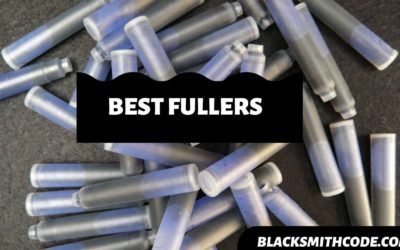Are you aware that their blacksmiths can use a wide variety of materials for their procedures? Carbon fiber is one of the elements that blacksmiths use for their limitless creativity. Read on to find out how blacksmiths can forge carbon fiber into various products.
Carbon fibers are organic polymers. They have astonishingly unique properties, and they are quite different from steel and metals.
Carbon fibers have an unbelievable extent of stiffness and strength. Carbon fibers are two times stiffer than steel, and it is five times stronger than average steel when considered per unit weight. Also, carbon fibers are very resistant to chemicals.
The thermal tolerance of carbon fibers is quite high. It can withstand high temperatures with just a little thermal expansion.
Despite the scary and rigid properties of carbon fibers, blacksmiths still find a way of forging them. Here are some simple and necessary steps that can assist you through the process of forming carbon fibers.
Essentials
Before proceeding with the forging process of carbon fiber, there are some essential materials and tools you must keep. While you might be lucky to have some at hand, you still definitely have to purchase others. The essentials for forging carbon fibers include;
Mold
Screwdriver
Heater
Polish
Sander
Instructions on How to Forge Carbon Fiber
Step 1: Vacuum pump
having a mold is the first step to take if you intend to build anything from carbon fiber. The essence of the frame is to shape the carbon fiber into a form that suits you. Often, molds are usually purchased from suppliers.
Quick Steps
- Spray with a substance that allows easy separation between the mold and the carbon fiber once you finish it.
- These materials should not interfere with the curing process. You can either make use of some special wax that is made specifically for the purpose. Alternatively, you can order for the purchase of a mold lubricant.
- These substances usually form a layer between the resin and the mold without solidifying.
- You can also ensure that you saturate the entire corners of your mold with resin. It serves as a good alternative for waxes.
Step 2: Lay The Carbon Fiber
Carbon fibers are usually in the form of a cloth. Once you have successfully prepared the surface and the mold, proceed to lay off your carbon fiber.
Quick Steps
- Ensure the proper coverage of all the interior parts of the mold with the carbon fiber.
- Press the carbon fiber into all the corners of your frame and surface. You can make use of a screwdriver
- Spray the fiber cloth with more resin until it becomes saturated.
- Prevent dirt from reaching the surface of the carbon fiber to induce better mold. You can consider bagging the mold.
Step 3: Heating
Now, it is time to apply heat hen forging carbon fiber. The main aim of the heating is to accelerate the curing process. Curing without the application of heat can take about 24 hours or more.
Quick Steps
- Set up a heat source between the temperatures of 250-350℉.
- Allow the heating to be consistent for several hours.
- Resins will, however, cure below 60℉.
Step 4: Finishing
You would know it is time to wrap up your work once you are through with the heating or curing process. The finishing is usually independent of the curing method you use. All that matter is that it is done correctly and successfully.
Quick Steps
- Consider the application of three more layers of resin to improve the final outlook of your project. This procedure tank takes a couple of hours.
- Sand the uppermost layer of the three layers of resin you recently applied. Sand softly so that the effect will not go beyond the resin layer. The sanding process aims to remove any traces of imperfection, such as dirt from the resin’s surface.
- Once you have eliminated the blemish, you can polish the surface.
- Ensure that you apply the polish with a soft medium.
- Inspect all parts and ensure that there is no deformation or damage.
FAQs on How to Forge Carbon Fiber
Question
What is carbon fiber?
Carbon fiber is a unique material. Some people often refer to it as graphite fibers, while some others refer to it as carbon graphite. It has dynamic properties and an appealing outlook.
Carbon fibers are composed of a tiny strand of carbon elements. Carbon fibers are unusually strong and have high tensile strength relative to their size. Some individuals often refer to carbon fiber as the most reliable material around.
times.
Question
What are the significant uses of carbon fibers?
There are no limits to the extent of the utility of carbon fibers. It has a wide variety of uses because of its properties, and the strength and tensile property of the material makes it a right candidate for reinforcement of composite materials.
Carbon fibers are also useful in the textile industry and as microelectrodes.
glue off of the counter.
Question
Is carbon fiber a metal or just a sticker?
No. Carbon fiber is neither a metal nor a sticker. It is just a unique material with extraordinary properties. It can be integrated with several other elements to form composites together.
Question
Does Carbon fiber have any disadvantages?
Yes. Just like every other material, carbon fiber has its fair share of disadvantages. It has a low tolerance for compression and high impact.
Carbon fiber will break into pieces when hit by a hammer or other high impacts or forced a little beyond their strength. It also has limited or weak elastic properties.
These features reduce the diversity of its application.
Video
Warnings
Below are some of the precautions that must be in place during the forging process of carbon fibers. These precautions are essential for perfect outcomes and ensuring the safety of the person carrying out the task.
- Ensure that you use your protective gear while carrying out these tasks.
- Do not carry out your curing process with a kitchen flame. This restriction is because the flame that is let off is very toxic to humans.
- Be extra careful with the heating process to prevent burns.





